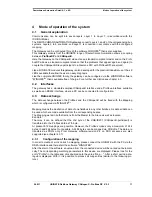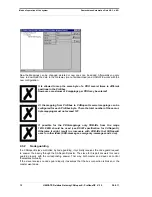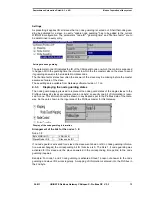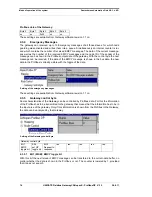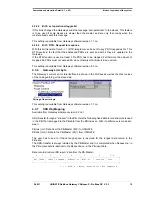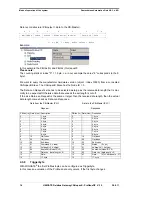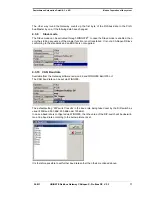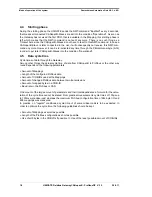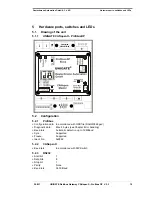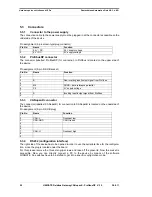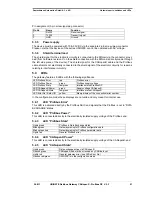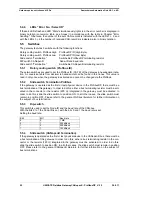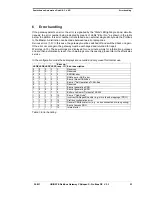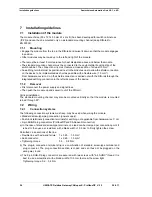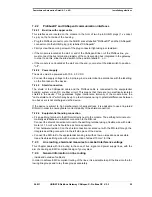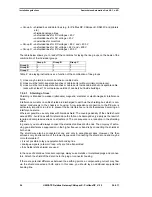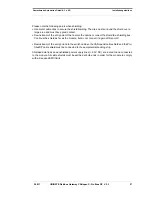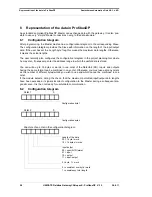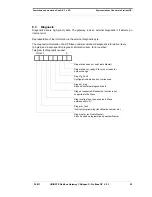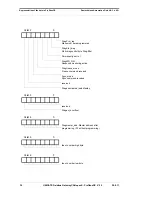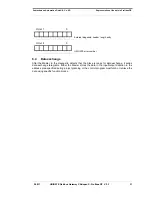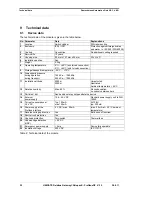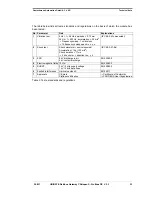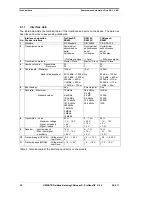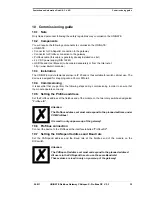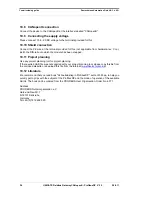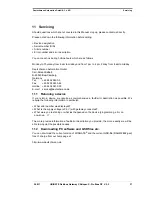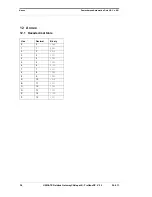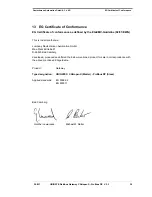
26.8.11
UNIGATE Fieldbus Gateway CANopen® - ProfibusDP V. 2.3
25
Deutschmann Automation GmbH & Co. KG
Installation guidelines
7.2.2
ProfibusDP and CANopen® communication interfaces
7.2.2.1
Bus line with copper cable
This interfaces are located on the module in the form of two 9-pin SUB-D plugs (1 x socket,
1 x pin) on the front side of the housing.
•
Plug the Profibus connector onto the SUB-D socket labelled "ProfibusDP" and the CANopen®
connector onto the SUB-D plug (pin) labelled "CANopen®".
•
Firmly screw the securing screws of the plug connector tight using a screwdriver.
•
If the module is located at the start or end of the CANopen® line or of the Profibus line, you
must connect the bus terminating resistor of the corresponding bus integrated in the gateway.
In order to do this, slide the slide switch to the position labelled ...on...
•
If the module is not located at the start or at the end, you must set the slide switch to position
"off".
7.2.2.2
Power supply
The device must be powered with 10.8...30 V DC.
•
Connect the supply voltage to the 2-pin plug-in screw terminal in accordance with the labelling
on the front panel of the device.
7.2.2.3
Shield connection
The shield of the CANopen® cable and the Profibus cable is connected to the equipotential
bonding system via an RC snubber circuit. This means that there are two electrically isolated
shields in the device. This guarantees higher interference immunity of the module since the
"cable shield current" which may be up to a few Amperes owing to potential differences between
two bus users is not discharged via the device.
If the device is subject to high mechanical or chemical stress, it is advisable to use a tin-plated
DIN-rail in order to ensure greater contact stability of the shield connection!
7.2.2.4
Equipotential bonding connection
•
Fit an earthing terminal to the DIN-rail directly next to the module. The earthing terminal auto-
matically establishes an electrical connection to the DIN-rail.
Connect the shield connection terminal to the earthing terminal using a flexible wire with a dia-
meter of 1.5 mm² which should be as short as possible.
From hardware-revision C on the shield-connection is carried out with the DIN-rail through the
integrated earthing connection in the left side piece of the device.
•
Connect the DIN-rail to the equipotential bonding rail with as low an impedance as possible.
Use a flexible earthing wire with a cross-section of at least 10 mm² for this.
7.2.3
Line routing, shield and measures to combat interference voltage
This Chapter deals with line routing in the case of bus, signal and power supply lines, with the
aim of ensuring an EMC-compliant design of your system.
7.2.4
General information on line routing
- Inside and outside of cabinets
In order to achieve EMC-compliant routing of the lines, it is advisable to split the lines into the fol-
lowing line groups and to lay these groups separately.

